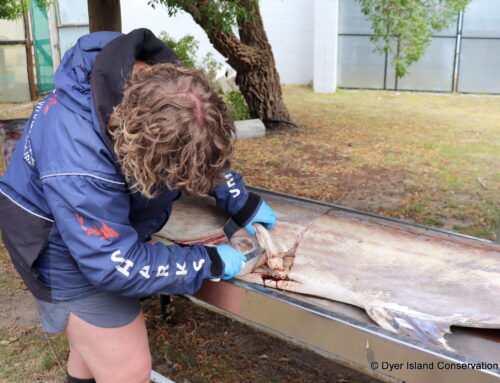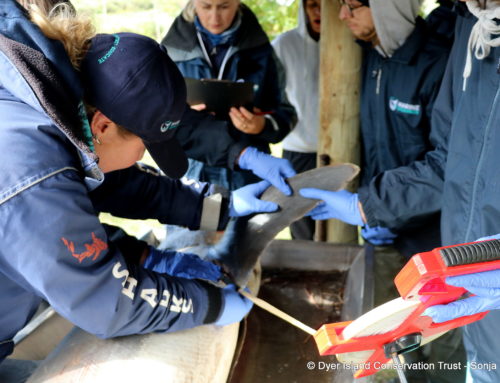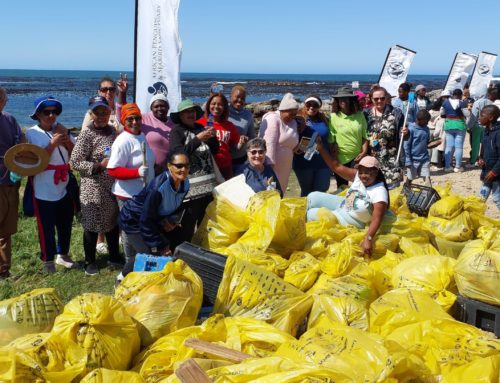CAPE FUR SEAL
September 05, 2010 by dyertrust
CAPE FUR SEALORDER:PinnipediaFAMILY:OtariidaeGENUS:ArctocephalusSPECIES:pusillusSUBSPECIES:pusillus
The Cape Fur Seal breeds at > 40 colonies in southern Africa between Algoa Bay (Port Elizabeth) and baia dos Tigres (southern Angola), at mainland sites or on islands nearby the coast. There have been several new colonies established in recent decades. In South Africa, seals are protected under the Seabirds and Seals Protection Act, and they are faced with threats such as being drowned in active fishing nets or being deliberately killed by fishermen. They often become entangled in marine litter such as discarded nets, fishing line, or plastic.
Description
Arctocephalus pusillis are the largest of all the fur seals, with adults distinguished by their coarse brown fur, and pups are born with a soft black coat. Males are considerably larger and more robust than females, averaging 2.5 m in length and weighing about 300 kg, whereas the females are usually less than 2 m long and weigh under 100 kg.
Biology
Spending much of their lives at sea, the fur seals diet consists mainly of pelagic fish such as pilchards, anchovies, hake and maasbanker, in addition to squid, octopus and rock lobster. They mainly feed over the continental shelf, in the cool, nutrient rich waters of the Benguela Current. Cape Fur Seals have been reported diving to more than 400 m and have a lifespan of up to 25 years of age. Breeding adult males come ashore or haul out in October to establish and defend territories. Shortly afterwards, in November, the females arrive and become part of the males harem, which can consist of up to 30 females. The females then give birth to the previous seasons pups during late November or early December, and then mate again shortly thereafter. Embryo implantation into the uterus is delayed for four months, with an eight-month gestation period ensuing, resulting in synchronous annual seasons of birth. Mothers alternate foraging trips to sea lasting for three months or more days, with shore visits of 1-3 days to nourish their pups. Weaning usually occurs when the pups are about 9-11 months of age.
Population and behaviour
Between the 17th and 19th centuries, the fur seal population was badly depleted by sealing. Thereafter quotas were enforced and seal harvesting was controlled. Approximately 2.7 million seals were harvested in the 20th century; nevertheless, the population has recovered in size and is currently estimated at almost 2 million. This rate of increase seems to have slowed since then. Although Cape Fur Seals normally travel alone, large groups are often seen rafting together in the kelp. Predators of this species include sharks, orcas and humans, with further losses of seals occurring through poaching, entanglement in discarded fishing nets and lines, by-catch in fisheries, marine pollution and changes in prey availability. Seals are known to negatively affect breeding seabirds via habitat displacement and predation.
References
ATTWOOD, C., BRANCH, M., MANN-LANG, J., MATTHEWS, S. & GLAVOVIC, B. 2001.
CoastCare Fact Sheet Series. Department of Environmental Affairs and Tousirm, South Africa.
BRANCH, G.M., GRIFFITHS, C.L., BRANCH, M.L. & BECKLEY, L.E. 2005.
Two OceansA guide to marine life in southern Africa. 2nd edition. David Philip, Cape Town. 360pp.
REEVES, R.R., STEWART, B.S., CLAPHAM, P.J., POWELL, J.A. 2002.
Sea Mammals of the World: A Complete Guide to Whales, Dolphins, Seals, Sea Lions and Sea Cows. A & C Black Publishers, London.
2010 Dyer Island Conservation Trust




